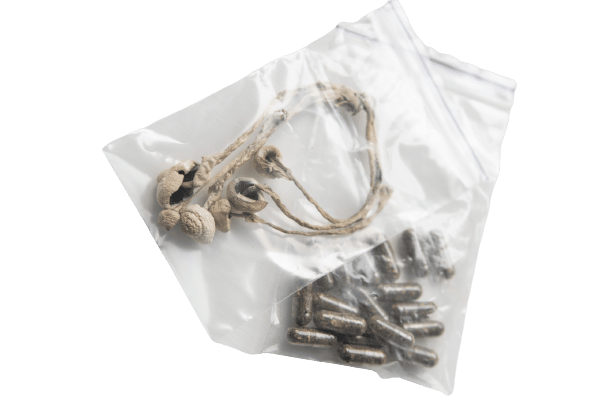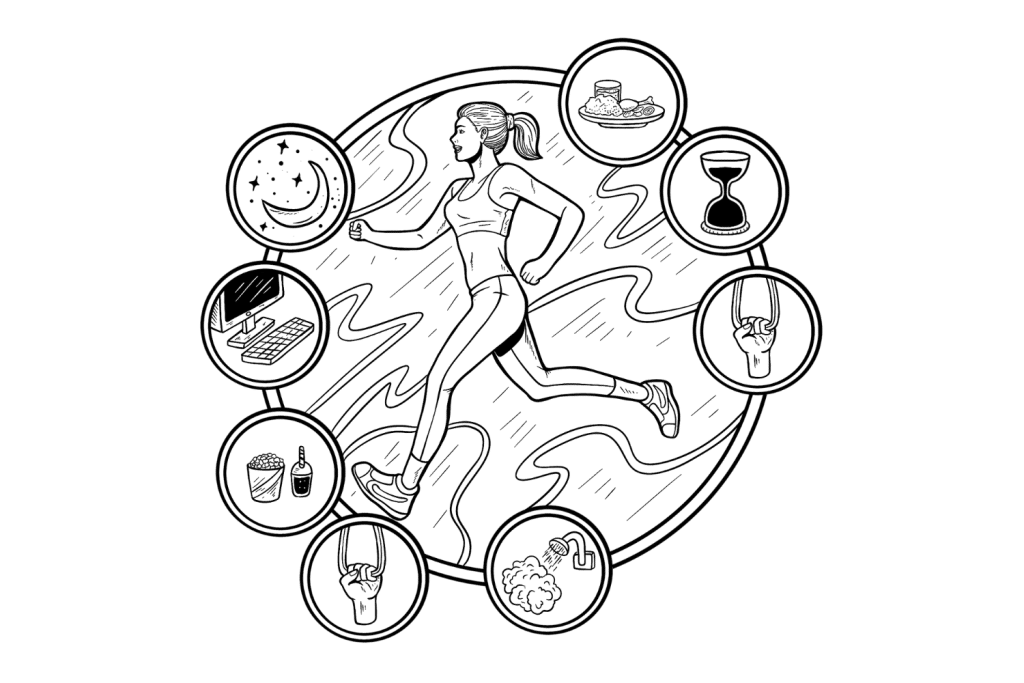Magic Mushroom Capsules For Sale
Microdosing isn’t a new idea by any means. It’s become mainstream in recent years after several high-level tech executives in Silicon Valley started talking about their experiences with small, daily doses of psychedelics. CEOs and other executives say they’re using microdoses of LSD or magic mushrooms to make them more productive, more creative, and sharper in the office. Magic Mushroom Capsules.
Here, we’ll cover everything you need to know about microdosing.
You’ll learn how it works, what the research community says about the practice, and how to get started with microdosing LSD, magic mushrooms, mescaline, and more.

What is Microdosing?
Microdosing is the practice of taking very small doses of a psychoactive substance — usually LSD or magic mushrooms. The dose is too small for it to produce any perceptual changes.
In other words — microdosing won’t make you high.
This comes in contrast to a conventional macro dose — which is a large dose with the goal of producing a psychedelic experience.
Microdoses aren’t used to induce hallucinations or a spiritual experience. Instead, the goal is to improve creativity, boost professional performance, increase concentration, and support deeper and longer-lasting flow-states. Magic Mushroom Capsules
Benefits of Microdosing
The science of microdosing is still in its infancy.
The bottom line is that we simply don’t have enough long-term data to make any definitive claims about what we can expect to gain from using microdoses [https://psyttraxx.com/product/buy-quality-azurescens-microdosing-capsules-online/3]. Most of the evidence we have at the moment comes from anecdotal reports and survey-based studies.
However, there are several high-level studies in the works as we speak exploring the short and long-term benefits of microdosing psychedelics. Companies like MindMed are leading the way with this research. One of its studies on the effects of microdosing LSD for ADHD recently entered phase II of clinical testing.
With that aside, here are the main benefits commonly attributed to microdosing:
- Increased productivity
- Greater access to flow states
- More creativity & curiosity
- Higher sense of empathy & communication
- Improved focus & concentration
- Increased self-efficacy
- Better emotional wellbeing & connection
- More energy & coordination
- Greater sense of self-awareness
- May reduce addictive behaviors
- May help alleviate cluster headaches
- Offers protective action on the brain & neurological system
- Reduced anxiety levels (especially existencial anxiety at the end-of-life stage)
- Better rational awareness & problem solving
Results from an online survey were published in Harm Reduction Journal, quantifying the benefits of microdosing either LSD or psilocybin [1]. The final analysis included the data of 278 individuals who self-reported the benefits they experienced, as well as a rating of subjective importance of the experience on a scale of 0–100.
Here’s what the study discovered:
The main benefits reported included improvements in mood (27% of responders), improved focus (15% of responders), more creativity (13% of responders), and a higher level of self-efficiency (11% of responders).

Challenges of Microdosing
There are also a few challenges with microdosing. While many people find it can alleviate symptoms like anxiety or poor focus, some people report the opposite. In some cases, microdosing can trigger anxiety or make it harder to remain focused.
The main challenges of microdosing were also reported in the survey mentioned above. The most common challenges reported by responders were physiological discomfort (mainly anxiety), illegality, and lower energy levels (especially later in the day).
One study found microdoses of LSD changed participants’ perception of time [2].

How to Start Microdose
The process for microdosing is the same for all psychedelic substances. The main difference is merely the dose used.
1. Dose: How Much Do I Take For a Microdose?
By definition, a microdose is very small. The dose depends on the substance being used, as well as your weight.
In most cases, a microdose is around 10% of the standard psychoactive dose — or less.
Here are the typical microdoses for various substances:
- Magic mushrooms — 200 mg (0.2 grams)
- LSD — 8–12 micrograms
- Ayahuasca — Variable Dose (6 mg Equivalent)
- MDMA — 5–10 mg
- Mescaline — 10–40 mg
- Marijuana — 2.5–5 mg THC
- Ibogaine — Variable Dose (10%)
2. Intention: Set Goals & Intention Before You Start
The whole point of microdosing (for most people) is self-optimization. The motivation to use these substances depends on your individual situation. Whether that’s to help you live more presently, perform better at work or school, or to assist you with your creative endeavors is up to you.
Setting a few goals or intentions before you begin can make a big difference in seeing these improvements manifest. It doesn’t need to be too involved if you don’t want it to be. Even just taking a mental note of the kind of things you want to gain from your microdosing regimen is enough.
However, if you want to be more involved and take a proactive approach in your self-growth and discovery — there are plenty of ways to do that.
This practice is all about personal growth. Microdoses are merely a tool to help us dig deeper, cast a wider net, and accomplish more on a daily, weekly, and monthly basis.
It’s also a great way to develop and solidify new habits and routines in your life.
The best way to track your progress and goals while you microdose is to use bullet journaling methods — either on a note-taking app or in a physical notebook.
Here are some of the ways people are optimizing their growth while microdosing:
Journaling & Goal Setting
Before you even begin, write down your goals for microdosing. This will help keep the idea on the top of your mind as you go through the process. You can write down as many goals as you want, but it’s best to keep it to 1 main goal, and 2 or 3 smaller goals.
A few goals you may want to consider:
- Become proficient in a skill
- Finish writing that book or blog series
- Be able to sit and meditate for 1 hour every day
- Finish building that app or program
- Get an A in your studies
- Establish a new habit or routine
- Wake up at 5am every morning
- Write 6000 words every day (yes, it’s totally possible)

It also helps to keep a journal each day to help track your progress. Again, this can be as simple or as involved as you’d like. Some people prefer to use free-form journaling, others like a prompt-style journal method.
This is separate from the goals you set above. Your daily journal is used to track how you’re feeling, and how you’re progressing towards those goals. You can add as many prompts as you want here, but I’ve found it’s better to keep it short or you simply won’t fill them out every day.
For a really basic template, try using the following prompts:
- Rate your mood from 1 (not good) to 10 (feeling great!)
- Rate your stress levels from 1 (super-chill) to 10 (high-stress)
- Describe how you’re feeling today
- If you could only accomplish one thing today, what would it be?
Establish Healthy Habits & Routines
Starting a micro-dosing regimen is an excellent time to dial in your ideal habits and routines.
Have you been meaning to wake up earlier in the mornings? Exercise or meditate more often? Drink less coffee?
Making positive changes and developing habits to improve your life and optimize towards the goals you set can dramatically increase your chances of success. Magic Mushroom Capsules

Here are some of the most common lifestyle habits and changes to consider that can increase the impact of microdosing:
- Daily exercise — aim for at least 15 minutes of high-intensity or 45 minutes of low-intensity per day (more is great too!)
- Dietary changes — try a structured diet like the ketogenic diet, or simply cut out sugary and processed foods
- Sleep hygiene — go to bed at the same time every night and take measures to prepare yourself for sleep
- Meditation or yoga — even 10 minutes per day can have a profound impact on stress and focus
- Learn a new skill — microdosing is excellent for assisting learning. Why not take the time to add some new knowledge along the way?
3. Timing: Setting a Microdosing Schedule
Microdosing works best when done consistently over several weeks or months. When first starting out, there are three aspects of timing to consider:
- What time of the day should you take your dose?
- How many days should you microdose per week?
- How long should you continue to microdose?
What Time Of The Day Should I Take A Microdose?
Even in small doses, psychedelics have a mildly stimulating effect. This means if you take them too late in the day they can interrupt your ability to fall asleep.
Most people take their microdose in the morning to prevent this.
Keep in mind, most psychedelics wear off after about 6 hours, so you’ll want to time the dose so it gives you the desired benefits when you have the most to gain from it. This depends on what intentions you set in the previous step. Magic Mushroom Capsules
For example, if you want to be more productive at work, you’ll want to take the microdose right before you start work for the day. If you don’t usually start working until late morning, it doesn’t make a lot of sense to take your dose at 6 am.
If your goal is to improve creativity and you do most of your creative work in the late afternoon or early evening, you may want to take your dose closer to lunchtime so the effects overlap with your creative activities.
In general, you should avoid taking your microdose at least 8 hours before your regular bedtime. If you notice you’re having a hard time sleeping on the days you take the dose, you may need to adjust and take the dose even earlier. Magic Mushroom Capsules
How Many Days A Week Should I Take A Microdose?
Microdoses shouldn’t be taken every single day. Just like exercising, it’s important to take rest days.
There are a few philosophies for scheduling when it comes to microdosing:
- Dr. Fadiman Standard Microdose Schedule — Dose on day 1, no dose day 2 & 3, repeat
- Psychedelic work week — 5 days microdosing, 2 days off, repeat
- Alternating weeks — 1 week with dose, 1 week no dose, repeat
There’s a lot of debate in the microdosing community about what the best schedule is. In truth, there’s really no “right” or “wrong” way to do it. What matters is how it feels for you. Everybody is different and will respond in kind. Magic Mushroom Capsules
If you find taking the dose for an entire workweek is too much, add an extra rest day or two, or reduce the dose. These schedules are merely guidelines — it’s up to you to tailor the experience so it works for you.
My favorite schedule is the standard set by Dr. James Fadiman (1 day on, 2 days off). He set this schedule to standardize the process of microdosing in order to collect more consistent data.
Even when the substance wears off, there’s some residual effect. I find that after about 2 weeks of microdosing, I continue to feel the same benefits even on the rest days. Magic Mushroom Capsules
How Long Should I Continue To Microdose For?
When combined with goal-setting and intention, the effects of a microdose become stronger over long periods of time. It’s best to look at the improvements of microdosing as a long-term, gradual gain. It takes at least 2 weeks to develop new habits, and it can be even longer before you’re able to get into productive flow states on command.
With that said, it’s important to take some breaks from microdosing as well.
Most people will microdose for 6 to 8 weeks consistently, followed by a break of about a month or two.
Microdosing Guides: Substance-Based
The general concepts involved with microdosing are the same with every compound — however, each substance has its own unique spin in terms of the dose, benefits you can expect, how to take the dose, and ways to stay safe while using them. Magic Mushroom Capsules
Microdosing Magic Mushrooms (Psilocybin)
Magic mushrooms are the most common substance people use today as a microdose. They’re easy to take and there’s a lot of research on the specific benefits and safety of using this substance [].
How it Feels

What’s a Typical Microdose For Magic Mushrooms
The usual microdose of magic mushrooms is between 0.2 and 0.5 grams (200 to 500 milligrams).
Begin by weighing out the desired dose in raw, dried mushrooms, or take the dose as a capsule. All you need to be able to microdose shrooms is a small scale.
If you want to make your own capsules, you’ll need a scale, a capsule machine (cheap, but optional), and some empty gel capsules. Many people make their own microdose capsules that include other compounds as well, such as ginger powder, L-theanine, L-tyrosine, or L-tryptamine. Magic Mushroom Capsules
You can also order premade microdose capsules online.
There are several different species of magic mushrooms, each with separate concentrations of psilocybin. This can affect how much you should use for an equivalent microdose. The most common species, by far, is Psilocybe cubensis. Which should be used at a dose of around 200 to 500 mg.
Microdoses For Different Species of Magic Mushrooms:
What is a Microdosing Schedule?
A microdose schedule is a predefined regimen for taking small, functional doses of psychedelics. An example of a microdosing schedule would be to take one dose on Monday, then take a break for two days, then take another dose on Thursday, then take a break for two days, and rinse-repeat.
Schedules enable individuals to measure functional changes over time and help users prevent the inevitable tolerance formation that makes psychedelics stop working after just one or two doses.
People disagree on the best schedule to hold, but there are two major recommendations for newcomers.
These are the “Stamets stack” and “Fadiman protocol,” named after their iconic creators. Magic Mushroom Capsules
These pioneering psychonauts recommended:
Some microdosers swear by one option, while others switch it up all the time. The right schedule will fit into your life and make an impact where you need it most.
The Fadiman Protocol
Fadiman suggested 10 μg of LSD every third day to best measure the effects. This consisted of a dose day on day 1, the “afterglow day” following, and a day of rest and further tolerance reset.
Another suggestion was to only follow the schedule for 4-8 weeks, then adjust according to the reactions of their body and emotional state. Magic Mushroom Capsules

His purpose for this schedule was to help users track the difference between microdosing days and days without. Following the massive popularity of his book and the rise of microdosing, Fadiman ran a study on users following his protocol, having them self-report results over 18 months [2].
Along with noting improvements in mood and mental health, the study determined that microdosing was safe for a wide variety of people and situations. Additionally, they showed massive improvement among small groups, such as those with migraines or cluster headaches, traumatic brain injuries, shingles, and menstrual pain. Magic Mushroom Capsules
The Stamets Stack
Stamets Stack is both a schedule and a formula for getting the most out of microdoses of psilocybin. This formula includes Psilocybe cubensis mushrooms mixed with lion’s mane and niacin to promote neuroplasticity and neurogenesis.
Paul Stamets first suggested a schedule of five days on, two days off but later changed this to four days on, three days off.
Neuroplasticity is the capability of neuronal networks to restructure in the brain based on stimuli — both external and internal. Neurogenesis, on the other hand, is the creation of new neurons in the brain by neural stem cells. Magic Mushroom Capsules

It’s essential during early development but continues throughout your life, though both processes seem to slow with age. Magic Mushroom Capsules
Here’s what each ingredient of the “stack” brings to the table for these end goals:
- Psilocybin — In research conditions, psilocybin and other psychedelics have been shown to induce neuroplasticity. A 2021 study hypothesized psychedelics’ ability to enhance neuroplasticity is the mechanism behind their therapeutic benefits [5].
- Lion’s Mane — Lion’s Mane mushrooms contain the compounds hericenones and erinacines, which have been shown to increase nerve growth. Magic Mushroom Capsules
- Niacin — Vitamin B3, or Niacin, produces an uncomfortable flushing effect when taken at the dose Stamets suggests. This is from the effects of the supplement on lowering blood pressure and increasing its flow through vasodilation. Stamets argues this can help your dose move more freely through the bloodstream and brain. Magic Mushroom Capsules
Paul Stamets suggests a dosage of:
Note: You can combine niacin and lions mane with LSD for similar benefits as well. Magic Mushroom Capsules